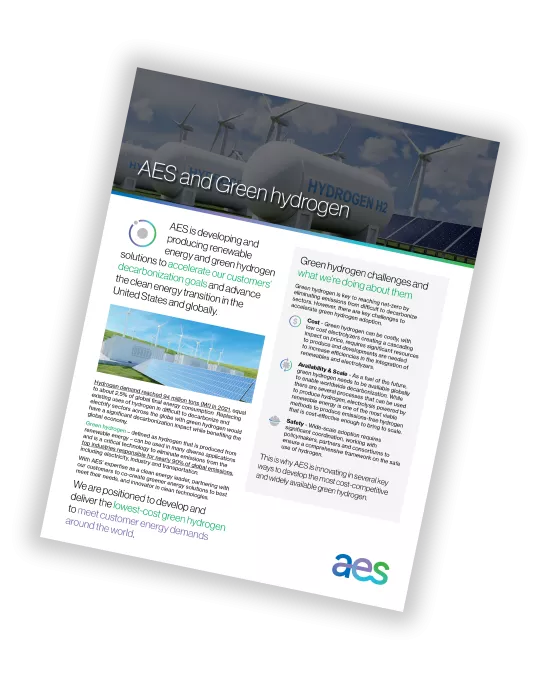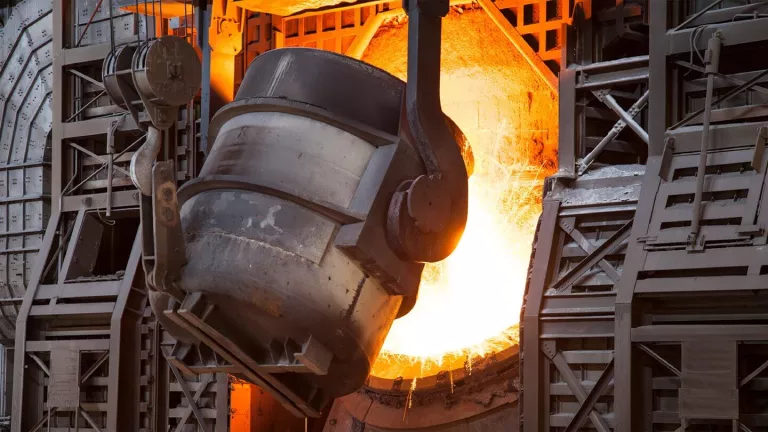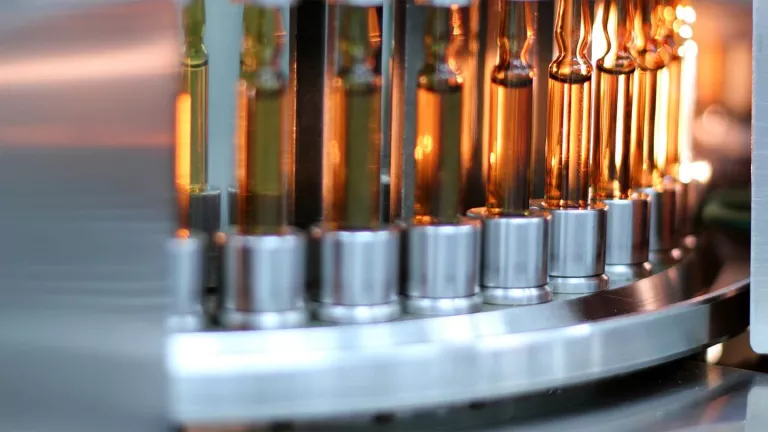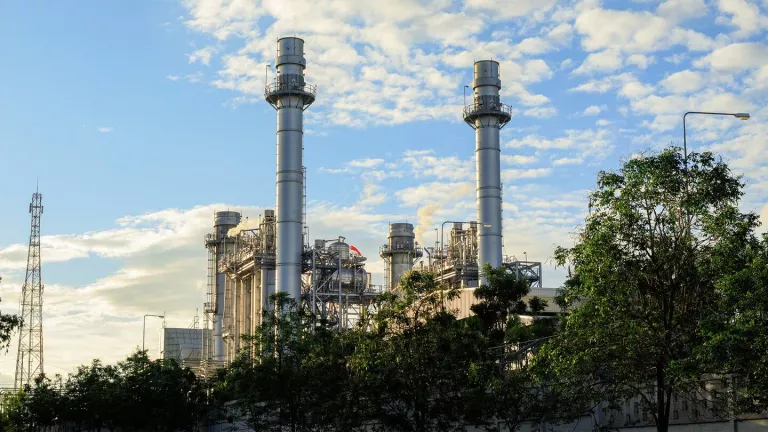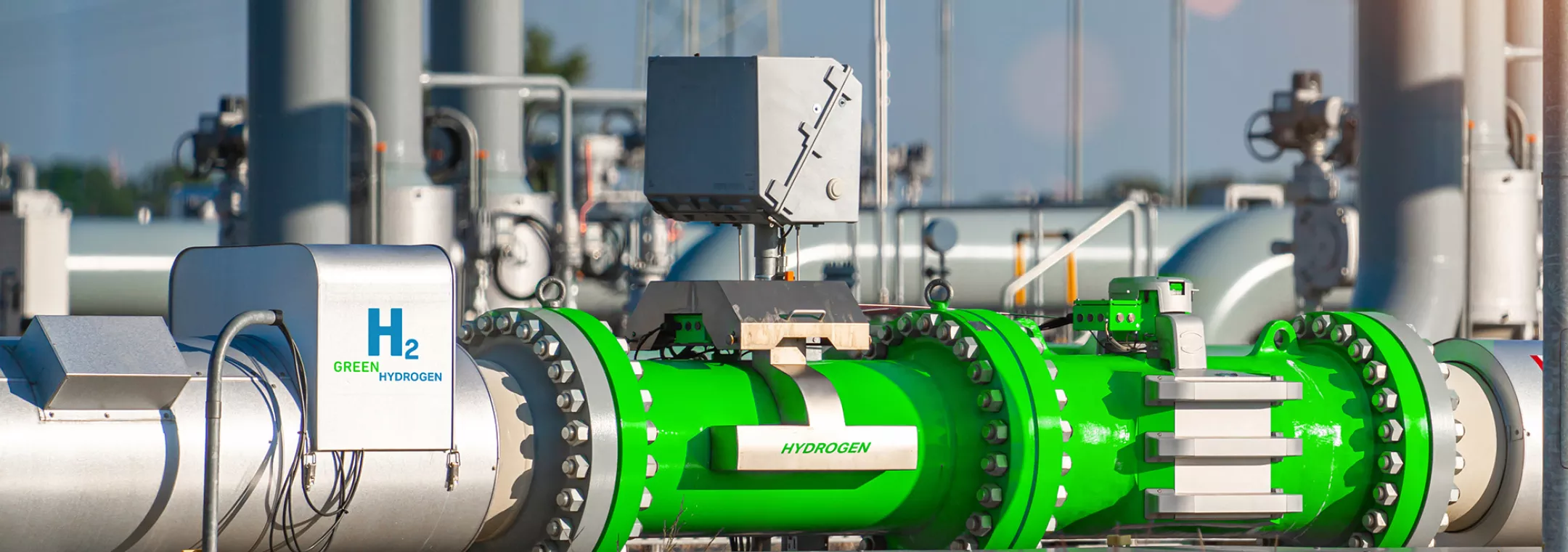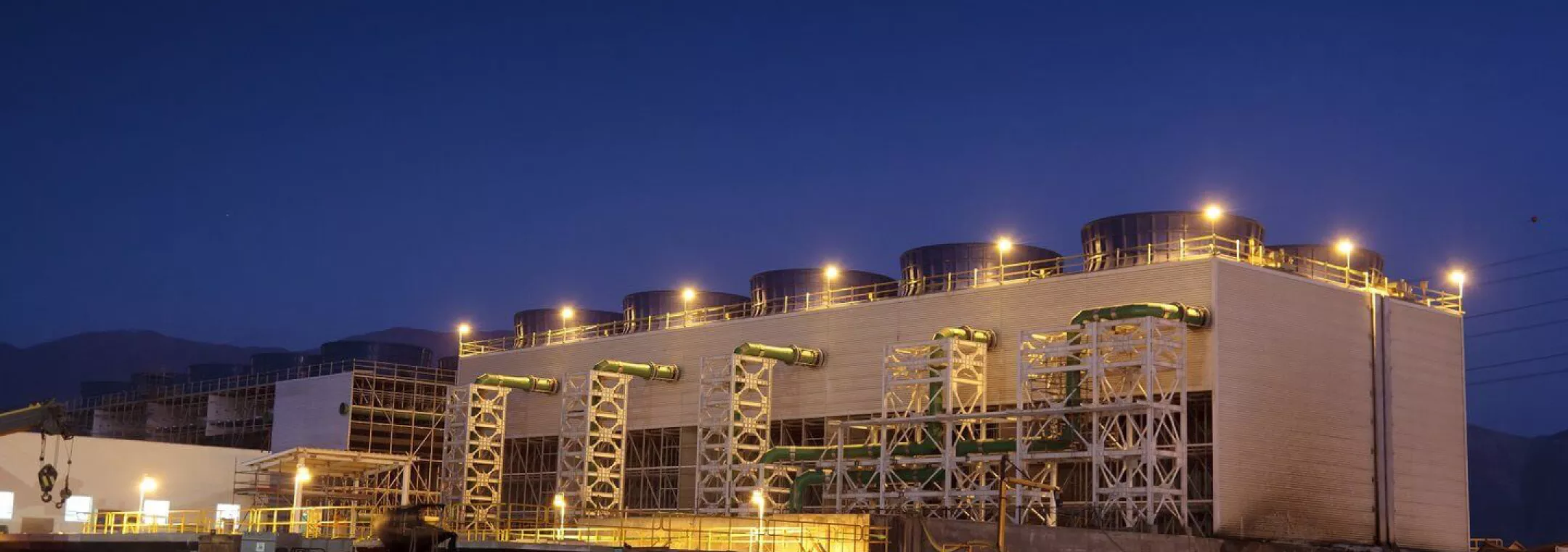AES is leveraging existing capabilities and insight-based innovation to increase efficiency and drive substantial cost reduction of green hydrogen.
(1) Bloomberg New Energy Finance (BNEF). (2) Science Based Targets. (3) BNEF. (4) McKinsey & Company. (5) McKinsey & Company. (6) National Renewable Energy Laboratory (NREL). (7) BNEF.
Green hydrogen is defined as hydrogen that is produced from renewable energy.
Hydrogen is produced by splitting water into hydrogen and oxygen. The most common way to do this is through electrolysis, which separates hydrogen from water using an electric current. When this process uses renewable energy, the result is green hydrogen.
While there are several processes that can be used to produce hydrogen, electrolysis powered by renewable energy is one of the most viable methods to produce emissions-free hydrogen that is cost-effective enough to bring to scale.
The differences between green hydrogen vs blue hydrogen vs gray hydrogen lies in how the hydrogen is produced. While hydrogen does not emit carbon when consumed, creating the gas can be carbon intensive.
Grey hydrogen is the most common form of hydrogen to be produced. It uses fossil fuels such as methane or coal to produce green hydrogen through steam methane reforming (SMR) or a gasification process.
Blue hydrogen is hydrogen produced from natural gas through SMR where natural gas is mixed with hot steam and a catalyst. The carbon dioxide produced in this process is captured and stored underground through carbon capture and storage (CCS) to prevent the emissions from being released into the atmosphere, resulting in blue hydrogen.
Green hydrogen is hydrogen produced from renewable energy. Green hydrogen does not produce emissions, making it a critical technology to reach net-zero emissions by 2050.
Green hydrogen benefits the global economy: it can be used in many diverse applications and is a critical technology to reduce emissions in some of the highest emitting industries, including shipping, steel and chemicals. With green hydrogen, we are able to solve key challenges needed to create a 100% clean energy future.
Green hydrogen can decarbonize many diverse sectors through its ability to provide fuel, heat and power systems and energy storage services. Examples of these sectors and applications include:
- Fuel for long-haul transportation, maritime and aviation
- Industrial processes that require high temperatures, such as iron and steel production
- Petrochemicals
- Fertilizers
- Industrial feedstock
- Power generation
- Long-duration energy storage
Green hydrogen for hydrogen vehicles is a pathway for decarbonizing transportation, particularly in long-haul, large payload and rapid fueling scenarios. Hydrogen trucks can be refueled quickly, and fuel cell vehicles have a similar range to gas at 250-400 miles. Additionally, hydrogen powered vehicles can alleviate pressure on the grid, utilize existing infrastructure to decarbonize transportation and create fuel diversity, making them an excellent complement to electric vehicles (EVs).
Green hydrogen is a critical fuel of the future to reach net-zero as hydrogen demand, adoption of clean technologies and economic opportunity continue to increase.
A recent McKinsey study estimated that the U.S. hydrogen economy could generate $140 billion and support 700,000 jobs by 2030. Similarly, a report by the Hydrogen Council estimates that 18% of the world energy market will consist of hydrogen by 2050. Hydrogen as a future fuel is both a promising and critical energy source to reach net-zero.
Globally, as of 2020, the hydrogen market was valued at $900 million and is expected to reach $300 billion by 2050. As of 2021, companies around the world have formed alliances to increase production of the fuel fifty-fold in the next six years The hydrogen market could be worth over $1 trillion a year by 2050 according to Goldman Sachs
Global momentum is building as governments and companies incorporate green hydrogen into their decarbonization strategies. Nine countries – which cover around 30% of global energy sector emissions today – released their national strategies in 2021-2022.
Green hydrogen is available today thanks to the efforts of forward-thinking leaders across the energy industry.
According to the International Energy Agency (IEA), there are more than 100 pilot and demonstration projects for using hydrogen and its derivatives in shipping, and major companies are signing strategic partnerships to secure the supply of these fuels. In the power sector, the use of hydrogen and ammonia is increasingly attracting attention, with announced projects reaching nearly 3.5 GW of potential capacity by 2030.
The pipeline of hydrogen projects is continuing to grow with 680 large-scale projects valued at USD $240 billion proposed. Green hydrogen companies and organizations increasing their efforts in hydrogen power generation across the energy industry are continuing to rise.
The IEA Hydrogen Projects Database covers all projects commissioned worldwide to produce hydrogen for energy or climate-change-mitigation purposes since 2000. You can view hydrogen and green hydrogen projects here and here.
The versatility of hydrogen fuel creates many opportunities to replace fossil fuels and other non renewable energy sources in many sectors while maintaining energy security and reliability.
Today, close to 95% of hydrogen production is from fossil fuels, resulting in 830 million tons of CO2 each year used to produce 74 million tons of hydrogen to meet demand. Greening hydrogen would create a significant positive impact in the energy transition to mitigate the effects of climate change.
The IEA, International Renewable Energy Agency (IRENA) and Wood Mackenzie are three leading research firms in the energy industry covering green hydrogen and the hydrogen industry at large.
Additionally, there are several leading organizations focused on accelerating the adoption of hydrogen through voluntary commitments and policy development, including the Green Hydrogen Coalition, Green Hydrogen Catapult and Hydrogen Council.

Meet AES
The AES Corporation (NYSE: AES) is a Fortune 500 global energy company accelerating the future of energy. Together with our many stakeholders, we're improving lives by delivering the greener, smarter energy solutions the world needs. Our diverse workforce is committed to continuous innovation and operational excellence, while partnering with our customers on their strategic energy transitions and continuing to meet their energy needs today.
